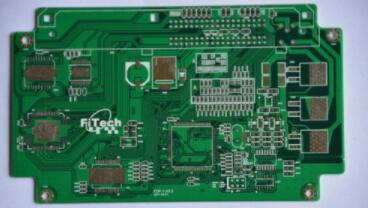Everyone knows that high-frequency boards are high-frequency circuit boards used in the high-frequency field. It has requirements for the dielectric value of the circuit at high frequency, with low dielectric coefficient and strong stability. So what aspects should be paid attention to when designing high-frequency boards?
1. The design of the high-frequency board should consider whether a matching resistance can be added between the differential line pairs at the receiving end?
The matching resistance between the differential line pairs at the receiving end is usually added, and its value should be equal to the value of the differential impedance. This way the signal quality will be better.
2. How to implement differential wiring for a clock signal line with only one output terminal?
To use differential wiring, it makes sense that both the signal source and the receiving end are differential signals. Therefore, it is impossible to use differential wiring for a clock signal with only one output terminal.
3. How to avoid high-frequency interference in the design of high-frequency board?
The basic idea of avoiding high-frequency interference is to minimize the interference of the electromagnetic field of high-frequency signals, which is the so-called crosstalk (Crosstalk). Can increase the distance between high-speed signal and analog signal, or add groundguard/shunttraces beside the analog signal. Also pay attention to the noise interference from the digital ground to the analog ground.

4. How to solve the problem of signal integrity in the design of high-speed and high-frequency boards?
Signal integrity is basically a problem of impedance matching. The factors that affect impedance matching include the structure and output impedance of the signal source, the characteristic impedance of the trace, the characteristics of the load end, and the topology of the trace. The solution is to rely on the topology of termination and adjustment of the wiring.
5. How is the differential wiring method realized?
There are two points to pay attention to in the layout of the differential pair. One is that the length of the two wires should be as long as possible, and the other is that the distance between the two wires (this distance is determined by the differential impedance) has to be kept constant, that is, to keep parallel. There are two parallel ways, one is that the two wires run on the same side-by-side, and the other is that the two wires run on two adjacent layers above and below (over-under). Generally the former
There are many ways to implement side-by-side.
6. How to choose PCB high-frequency board in the design of high-frequency board?
The choice of PCB high-frequency board material must strike a balance between meeting design requirements and mass production and cost. The design requirements include both electrical and mechanical parts. Usually, this material problem is more important when designing very high-speed PCB high-frequency boards (frequency greater than GHz). For example, the commonly used FR-4 glass fiber board material, the dielectric loss at a frequency of several GHz (dielectric loss
loss) will have a great impact on signal attenuation and may not be suitable. As far as electricity is concerned, pay attention to whether the dielectric constant and dielectric loss are suitable for the designed frequency.
7. Why should the wiring of the differential pair be close and parallel?
The wiring of the differential pair should be appropriately close and parallel. The so-called proper close is because this distance will affect the value of differential impedance, which is an important parameter for designing differential pairs. The need for parallelism is also to maintain the consistency of the differential impedance. If the two lines are suddenly far and near, the differential impedance will be inconsistent, which will affect the signal integrity
(signalintegrity) and time delay (timingdelay).
8. How to deal with some theoretical conflicts in the actual wiring of high-frequency boards
1. Basically, it is right to divide and isolate the analog/digital ground. It should be noted that the signal trace should not cross the divided place (moat) as much as possible, and the return current path of the power supply and signal should not be too large.
2. It is true that there are many conflicts between high-speed wiring and EMI requirements. But the basic principle is that the resistance and capacitance or ferritebead added by EMI cannot cause some electrical characteristics of the signal to fail to meet the specifications. Therefore, it is best to use the techniques of arranging traces and PCB high-frequency board stacking to solve or reduce EMI problems, such as high-speed signals going to the inner layer. Finally, use resistors, capacitors or ferrite
Bead way to reduce the damage to the signal.
3. The crystal oscillator is an analog positive feedback oscillation circuit. To have a stable oscillation signal, it must meet the specifications of loopgain and phase, and the oscillation specifications of this analog signal are easily disturbed, even if groundguardtraces are added, it may not be able to completely isolate the interference. Moreover, if it is too far away, the noise on the ground plane will also affect the positive feedback oscillation circuit. So, we must
The distance between the crystal oscillator and the chip may be close.
The above are the 8 aspects that should be paid attention to in the design of high-frequency boards organized by the editor. I believe that as a design or engineering, you should have a deeper understanding of high-frequency boards.